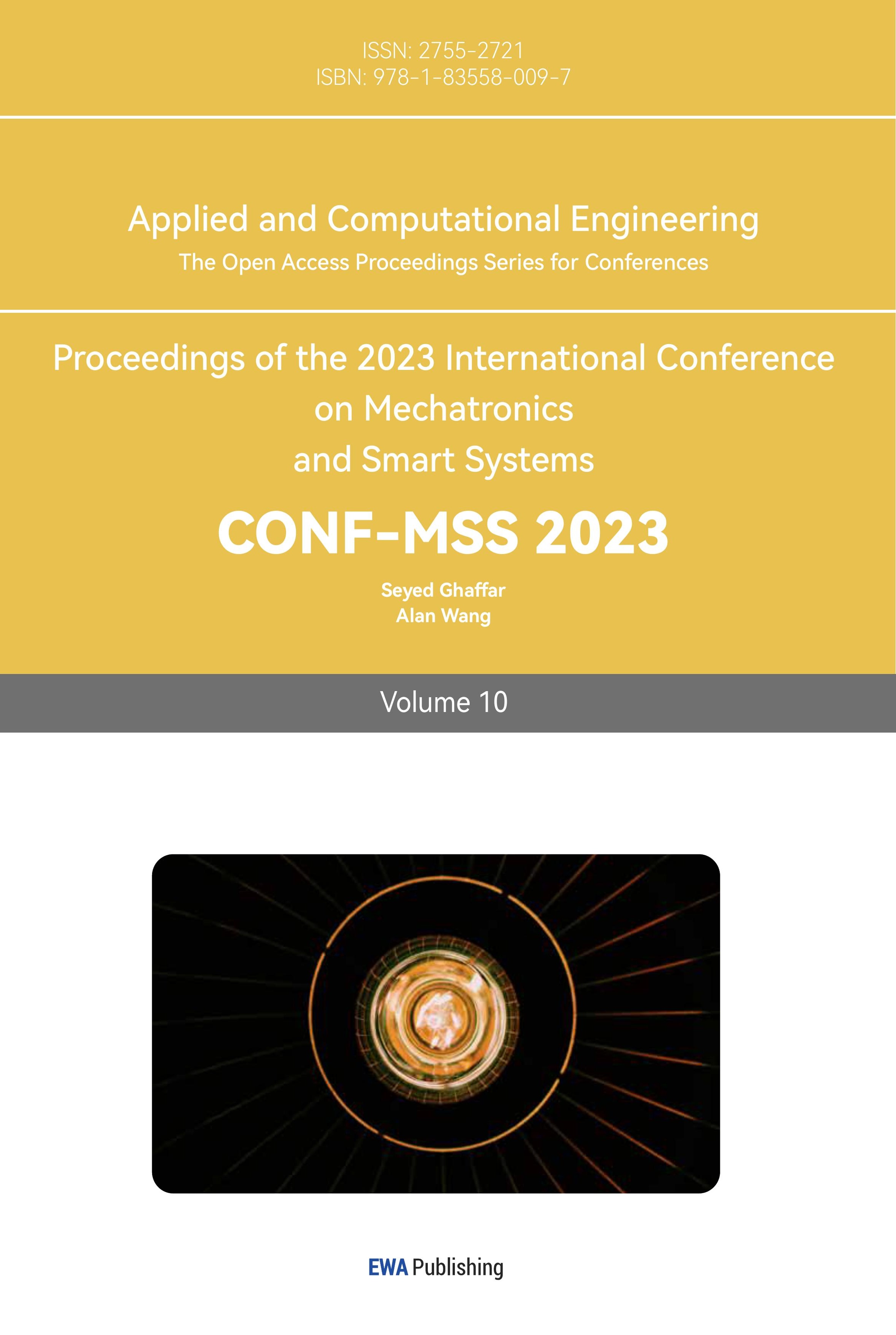1. Introduction
In resent age, electric vehicles (EVs) are attaching a rising attention all around the world, it has two distinguished advantages. Firstly, electric vehicles are environmental-friendly, it has less exhaust and greenhouse gas emission, for example, carbon dioxide, sulfur dioxide, hydrocarbon and so on, especially under the background of carbon neutral and peak carbon emission. Secondly, because of the shortage of fossil fuel, while the electricity used by electric vehicles is a renewable and clean energy. On the other hand, EV still has a lot of problems. Firstly, changing is not very convenient, particularly when the changing power is not large enough, it will take a long time to replenish the battery. Secondly, for the battery, if it is too large, it is very expensive and take up a lot of place and weight, but if it is small, the endurance mileage of the car will be too short and so drivers will have range anxiety. Third is safety, wired charging is provided by wires that carry a lot of electrical current for safety, this could pose a considerable concern, especially in the event of extreme weather.
Now that wireless power transfer has been developed, the combination of wireless power transfer (WPT) and EV can eliminate some drawback of EV ahead. Charging becomes more comfortable, WPT makes it feasible for EVs to charge automatically, even when the owner of the car is not present. WPT do not have physically connection, EV can charge in static or dynamic, so the battery can be smaller while the endurance mileage can be guaranteed. From the perspective of the driver, this form of charger is safer because WPT avoids the conductor seen in wireless chargers.
The working principles of WPT allows for classification as Acoustic field power transfer and Electromagnetic field power transfer. Among Electromagnetic field power transfer, it has two kinds of transfer: Magnetic field power transfer and Electric field power transfer. Long-distance power transfer using electromagnetic radiation (microwave or laser). Near-field transmission using electric induction/coupling (also known as capacitive coupling). Near-field transmission using magnetic coupling (inductive or resonant), which is relatively the most matured technology among these three methods, as shown in Figure 1.
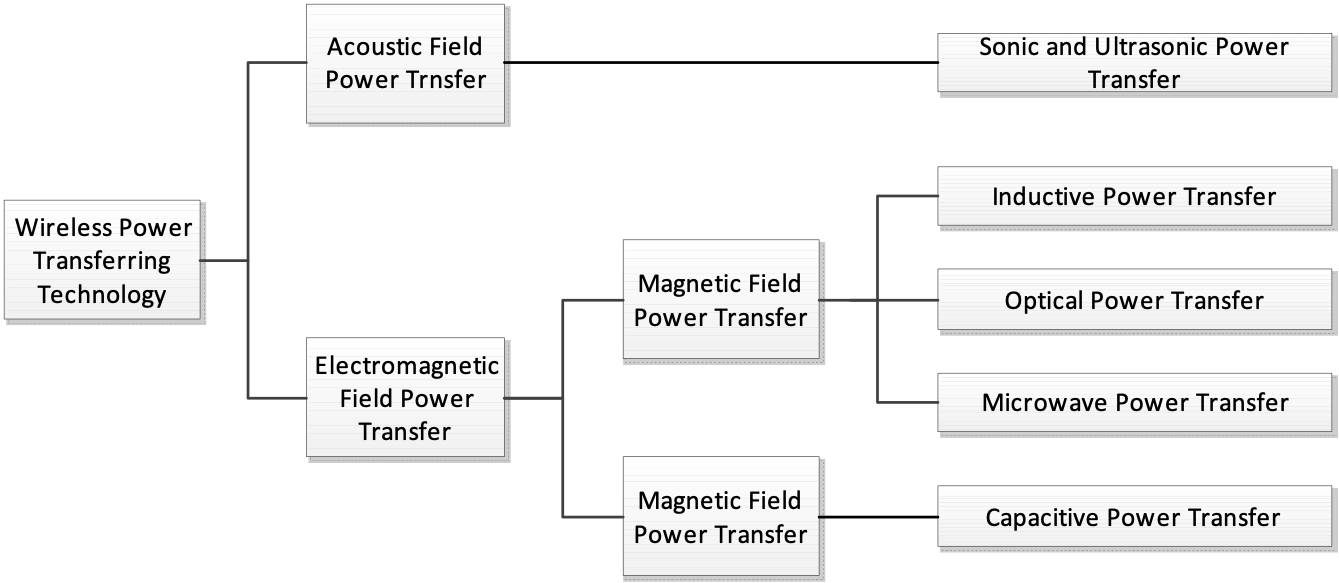
Figure 1. Category of wireless power transfer systems of WPT.
For charging operation mode, WPT can be classified into three operation modes: static, stationary or quasi-dynamic and dynamic. Static mode can be used in public charging station, home and working place. Stationary or quasi-dynamic mode is the extend of static mode, which is suitable for bus station and traffic lights. Dynamic mode can be set on a specialized wireless charging lane for on-moving charging. They are represented in Figure 2.

Figure 2. Different WPT scenarios. (a) Static. (b) Quasi-static. (c) Dynamic.
The basic charging system structure of WPT in EV are shown in Figure 3. Among the source side, AC energy first pass though the electromagnetic interface (EMI) stage. hen go though the rectifier to convert to DC, passing the boost converter and buck converter (optional) to inverter and become high frequency AC. Then compensation network compensate the power and transfer to the vehicle side via coil. Among the vehicle side, the power pass the compensation network and rectifier to become DC and enter the battery after filtering.

Figure 3. Basic charging system structure.
In this review article, the most recent technical advancements of WPT technology for EV applications and the state of WPT for EV system sustainability analyses are both condensed. From a technological and environmentally friendly standpoint, it describes recent research successes, challenges, and possible uses of WPT technology for EVs. The core idea of WPT is introduced in the opening paragraph. The second section emphasizes case studies of advanced WPT for EV applications and discussions of the practicality, sustainability, safety, and implications of this technology, as well as the difficulties and opportunities for enhancing its performance. It also offers opportunities to improve sustainable mobility.
2. WPT technologies
2.1. Classification of WPT technologies
2.1.1. Magnetic field power transfer (Magnetic Resonant WPT). Magnetic field power transfer is the most mature technology in WPT, it can transfer energy with two coupled air-core coils. The basic principle of magnetic resonant WPT is quit simple, according to Ampere’s Law: if there is a time-varying current in the primary coil, it will produce a dynamic magnetic field, at the same time, if the secondary coil can received the dynamic magnetic flux from the dynamic magnetic field, it will also induce the current, so the power has been transferred. In EV wireless chargers, in these chargers, power converters and associated control mechanisms are equally important, as shown in the general diagram of Figure 4.
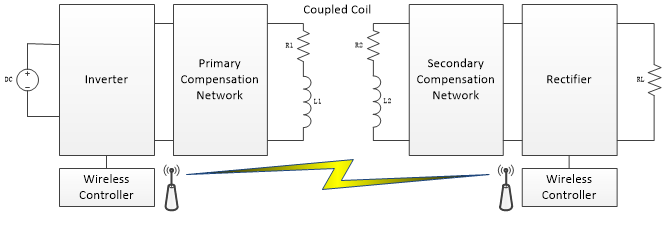
Figure 4. Basic structure of magnetic resonant WPT.
Also, according to Faraday's Law, the secondary coil's ability to transfer power is proportionate to the magnetic flux it received, so the main problem is to research how to maximize the magnetic flux between these two coupled coils. Right now, there are tow main strategies to solve this problem: advanced coil design and better compensation networks [1].
For coil design, along the development of WPT technology, various of coils has been designed. The first structures are the circular and the rectangular winding, which are also the simplest, researchers found that the transfer efficiency between coils can not be too high, so they did some modification to the coil topology and right now a sort of coil designs can be used to meet the different demands. For static charging, modified circular pad has a aluminium sheilding to protect the nearby people and ferrite bar to confine the magnetic field and improve the efficiency [2]. DD coil maximize the efficiency by improving its topology [2]. And multi-coil polarized couple coil, which has the better performance like DDQ coil bipolar pad and tripolar pad [2]. Figure.5 shows the structure of these coil designs.
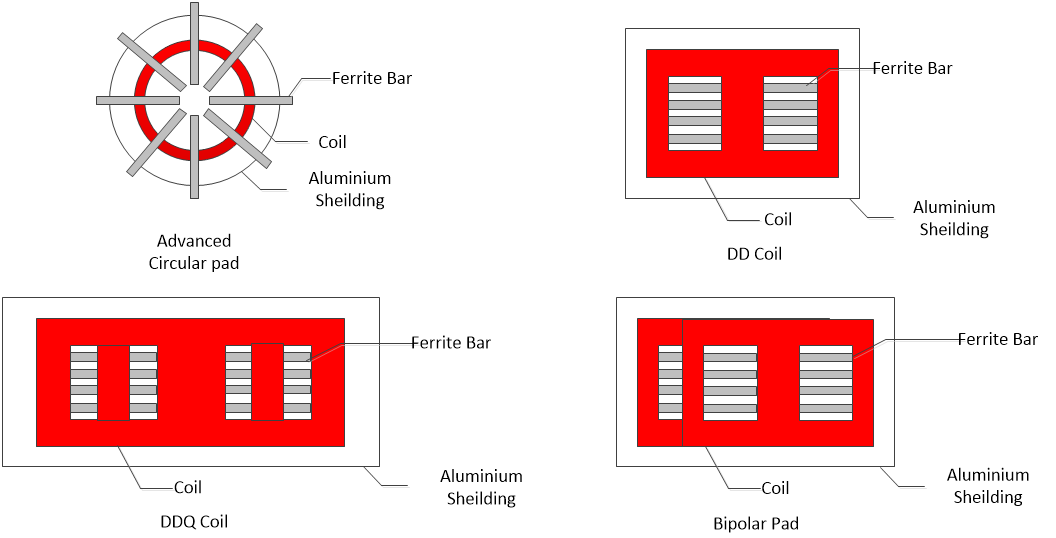
Figure 5. Structure of coil designs (a) Advanced Circular pad. (b) DD coil. (c) DDQ coil. (d) Bipolar Pad.
In dynamic charging field, the demand of misalignment is higher because the vehicles are moving while charging, so researchers in [3-5] find out E-type, U-type, W-type, I-type, S-type pick up and its modified type to achieve the requirements. The table.1 below shows the features of each coil designs.
Table 1. Coil designs and features.
Coil design | Features |
E-type | • Simple design • lower costs for manufacturing |
U-type | • Greater effectiveness for wider gaps • Reduced EMF because the return path is close to the sending power line |
W-type | • Decreased magnetic resistance • Higher power output than E and U type • High coupling coefficient • No aluminum shielding requirement |
I-type | • 20% less expensive than W-type • Reduced leakage EMF |
S-type | • Lower cost than I-type |
Ultra slim S type | • Narrower width width • Reduced leakage EMF |
Cross segment (X) type | • Excellent efficacy • Lower leakage EMF • Reduced prices for cable |
Because WPT of EVs are always resonant systems, in this way, reactive power are inevitable produced in WPT systems, which will greatly affect the efficiency of power transferring so compensation networks are applied to improve the WPT circuit. The basic structure is adding a capacitor, which is called Mono-resonant compensation, this capacitor can be series or parallel in the circuit and both side of the coils has compensation network, so there are four basic compensation network named S-S, S-P, P-S, and P-P, the first letter “S” meas series and “P” meas parallel, left letter refers to primary coil and right letter refers to secondary coil. Figure.6 shows the topologies of each compensation methods.
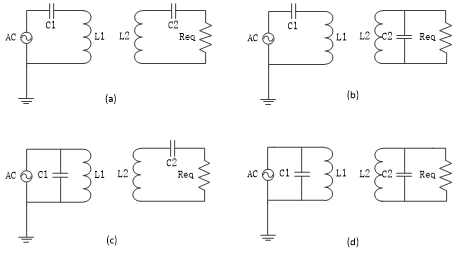
Figure 6. Basic compensation methods: (a) SS structure, (b) SP structure, (c) PS structure, (d) PP structure.
2.1.2. Capacitive wireless power transfer (Capacitive power transfer). Capacitive WPT is transferring power between two capacitive plates, which is very analogous to magnetic field power transfer, the difference is capacitive WPT using electric field to couple while magnetic resonant WPT using magnetic field to connect. When these two capacitive plates are in close proximity, an electric field is created, and the secondary side exhibits induced current, so the power has been transferred. Chargers also require compensation networks and power converters, as seen in Figure 7.
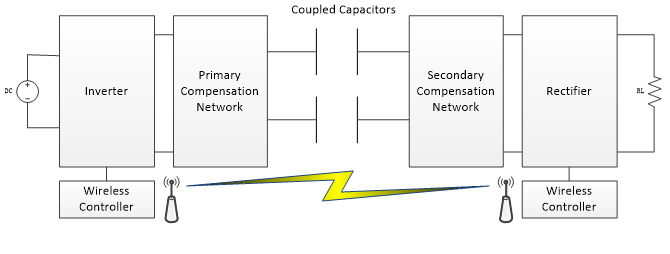
Figure 7. Basic structure of CPT.
Compared with magnetic resonant WPT, capacitive WPT is more suitable for dynamic WPT because of the feature of electric field. Dynamic WPT means larger charging area, electric field can be confined in a relatively smaller area between two couple plates while magnetic field has no restriction without the aluminium sheilding, so it is much safer using magnetic WPT for dynamic WPT [1].
2.1.3. Microwave power transfer. A far-field WPT approach known as microwave power transfer (MPT) uses microwaves to connect devices. The following example illustrates the basic operating principle of this technology. First, Powered by HVDC source, Magnetron generates the microwave and it is transferred by antenna, then, rectenna received the microwave and power electronic devices convert the microwave into DC current, In the last,electric energy to charge the battery. Among this process, phase-shifter is used to fine the direction of receive region. The transferring power of this technology always among 2.4GHz and 5.8GHz, in recent research, researchers also employ 28GHz [6]. Figure.8 shows the structure of MPT.

Figure 8. Basic structure of MPT.
2.1.4. Optical WPT. A WPT technology that uses a laser beam to deliver power is known as optical WPT or laser power beaming systems. A general representation of an optical WPT is shown in Figure 9.

Figure 9. Basic structure of optical WPT.
The working process of optical WPT is shown as follow. First, beam director emit a pilot laser beam and this beam received by PV array to set the direction of main laser beam. Second, laser diode powered by power source generates a main laser beam, in receiving side, The solar cells in the reception plate can turn laser light into electricity and recharge the battery. In this way, power can be transferred up to several kilometers.
One thing should take into consideration is that lasers are consider harmful for humans, especially when the power level is high enough to transferring electric energy [1].
Table 2 shows the summary and comparison of WPT described before.
Table 2. Comparison of WPT technologies.
WPT Technology | Power level | Efficiency | Bi-directional flow | Gap | Intermediate objects | Dynamic charging | Spending |
Magnetic | Up to 100kW | 90-95% | Yes | <30cm | Yes | Yes | Medium |
Capacitive | Up to 7kW | 80-85% | Yes | <30cm | Yes | Yes | Low |
Microwave | Less than 250W | 40-50% | No | >1km | No | No | High |
Laser | Less than 500W | 1-15% | No | >1km | No | No | High |
3. WPT for EV
3.1. Basic architecture and standards for WPT of EV
Among the development of WPT for EV, various of standards have been published to regularize the research. For example, as for the charging standard, Society of Automotive Engineers (SAE) has the SAE J2954/1 for light-duty vehicles, which has four levels according to the charging power [2,7,8]: WPT1 is designed for a home with a single phase 120V AC supply with a maximum power capacity of 3.7kVA. With WPT2, you can get 7.7 kW from the 240V AC mains; with WPT3, users can get 11.1 kW; and with WPT4, users can get 22 kW from a 240V three-phase AC power source. For WPT charging of heavy-duty electric vehicles, such as buses, with power ratings greater than 22kW to 150kW and higher from a 208 V AC three-phase, 480 V AV three-phase, or medium voltage supply, SAE J2954/2 is the advancement of SAE J2954/1.In addition, for a matched system to operate at rated power, the system's efficiency must be better than 85%, and for interoperable systems, it must be >80%.[7,8]. Table.3 shows the classification of SAE J2954/1. Apart of that, there are a sort of standards for other field of WPT for EV, [2] tells the detail of that.
Table 3. Proposed WPT power class.
WPT1 | WPT2 | WPT3 | WPT4 | |
Maximum input Volt Amps | 3.7kVA | 7.7kVA | 11.1kVA | 22kVA |
Minimum target efficiency | >85% | >85% | >85% | To be determined |
Minimum target efficiency at offset position | >80% | >80% | >80% | To be determined |
Frequency | 85 kHz within international frequency band (81.38-90) kHz | |||
3.2. Challenges and potential solutions for WPT of EV
Although WPT of EV has developed for decades, the researchers still have various challenges to surmount, details are shows as follow.
3.2.1. Transfer efficiency. The basic requirements for WPT is high transferring efficiency, higher efficiency means a sort of advantages, like cost-saving, energy-saving and safety. And the solutions to solve this problem still in many aspects. coil design, this overview has introduced some coil design and topology in the magnetic field WPT, those are all about the improving of the transferring efficiency. The wire itself should also been take into consideration, for example, Litz wire can be used to prevent skin-effect conduction losses and minimizes the losses due to eddy currents [9]. More advanced compensation methods. Apart from the four basic compensation methods before, there are various of multi-resonant compensation topologies with capacitors and inductors, which have better performance. Development of power electric devices, WPT needs high frequency rectifiers and inverters in main circuits, and the control circuit still needs power electronic devices, so the development of WPT has closely relationship with the development of power electronic devices [2]. Coupled coil misalignment, for WPT of EV, particularly for dynamic WPT, because the vehicle is moving, misalignment is inevitable. Recent years, the rise of automatic drive gives a way to alleviate this problem, compared with human driver, automatic driving has more precise control of the vehicle, so the receiving coil can have a better connection with the primary coil with the help of automatic driving, which greatly improving the transferring efficiency.
3.2.2. Economics. WPT of electric vehicles needs spending on charging infrastructure and battery storage, at the same time, it has advantages like convenience, safer charging process, most importantly, it lower the cost of electric vehicles by reduce the battery capacity of electric vehicles, battery is a very expensive part of electric vehicles, which is the main reason of the high price of electric vehicles, with the development of dynamic WPT, the range anxiety caused by smaller battery can be solved. Additionally, electric vehicles can be seen as distributed source, for example, China has approximately 10^7 electric vehicles, the battery capacity of these cars is colossal, if dynamic WPT can transfer energy bidirectional, electric vehicles can be connected to grid to solve some problems like power load shifting and to compensate the instability energy source like wind power generation. This is called V2G [10], which is a fragrant imagine of impeccable dynamic WPT for EV.
3.2.3. Communication. Apart from power transferring electronic circuit, communication is also a very important part of WPT. It is clear that WPT needs wireless communication. The main criteria of communication in WPT are low latency, which is the guarantee of a high quality WPT of EV; the ability to communicate multiple WPT systems synchronously, because dynamic WPT is always transfers to a sort of cars at a same time; suitable range for communication [2]. Table. 4 shows the comparison of wireless communication technology [11].
Table 4. Features of communication technology.
FM radio | Cellular | WiMax | DSRC | Satellite | |
Range | ≈100km | ≈10km | <50km | <1km | ≈1000km |
Data rate | >10kbps | 100kbps | 70kbps | 3-27Mbps | >100Mbps |
Latency | High | low | High | Very low | Very high |
Mobile connectivity | low | Very high | High | low | Very high |
Nowadays, with the development of 5G technology, which is still suitable for low latency information transferring, it is a solution for WPT communication.
3.2.4. Health and safety concern. Health and safety problems are still nonnegligible, the field flux of WPT should be restricted in a certain area, On this subject, the International Commission on Non-Ionizing Radiation Protection (ICNIRP) has released a guideline, which set the limitation of radiation. To solve this problem, researchers has a lot of methods. For example, as for leakage magnetic. In [12], authors reported a reactive shielding method, which use an additional coil to induce a cancelling magnetic field in order to decrease leakage magnetic field.
Foreign object detection (FOD) [7, 13] and vehicle detection [14, 15] is a essential part of WPT for EV. Vehicle detection make the coil be turned off automatically to avoid energy loss caused by eddy current, it also much safer to the nearby human and other objects. FOD can detect the foreign object can cut off the source when detect something wrong in the charging area [16]. WiTricity has created a FOD framework with overlapped coils, by checking the current and voltage in this coil, it can determine whether a foreign object has invaded [16].
4. Conclusion
It is obvious that WPT applications for EVs can lessen the scarcity of fossil fuels and cut exhaust and greenhouse gas emissions. With the dynamic WPT technology, the high cost of electric vehicles’ battery can be alleviated, which also promote the environmental protection. However, it still has a variety of challenges. For example, nowadays, the most mature WPT technology is inductive resonant WPT, but it still has many problems to solve: misalignment between primary and receiver coil, the strategies to improve transferring efficiency; components and coil design for high-power transferring to achieve higher demands; advanced designs for electronic and magnetic field shielding and nearby protection to solve the safety issue. The capacitive WPT is more suitable for dynamic WPT for safety concerns, but it still has some limitation on transferring power and transferring efficiency. The exist of parasitic capacitances also aggravate this problem. Microwave and optical WPT can transferring farther but have more safety issue on transferring power, the transferring path may have potential risk to human. At the same time, to have a higher transferring power, microwave WPT requires bulky antennas, which is a challenge to its application on electric vehicles.
For charging mode, static and quasi-static charging is a interim of dynamic WPT, dynamic WPT is the completed version of WPT for EV, which has too many advantages: reduce the battery capacity on EVs and its costs, at the same time, alleviate the range anxiety. V2G technology, this make it possible that EVs can be seen as distributed source and connected to the grid, with the development of smart grid, this large amount of source is very useful in power shifting. Right now, dynamic WPT still requires more advance to achieve the image before, additionally, a reliable performance of the chargers requires the development of other adjunctive technologies.
References
[1]. Triviño, A.; González-González, J.M.; Aguado, J.A. Wireless Power Transfer Technologies Applied to Electric Vehicles: A Review. Energies 2021, 14, 1547.
[2]. D. Patil, M. K. McDonough, J. M. Miller, B. Fahimi and P. T. Balsara, "Wireless Power Transfer for Vehicular Applications: Overview and Challenges," in IEEE Transactions on Transportation Electrification, vol. 4, no. 1, pp. 3-37, March 2018
[3]. S. Y. Choi, B. W. Gu, S. Y. Jeong and C. T. Rim, "Advances in Wireless Power Transfer Systems for Roadway-Powered Electric Vehicles," in IEEE Journal of Emerging and Selected Topics in Power Electronics, vol. 3, no. 1, pp. 18-36, March 2015.
[4]. C. C. Mi, G. Buja, S. Y. Choi and C. T. Rim, "Modern Advances in Wireless Power Transfer Systems for Roadway Powered Electric Vehicles," in IEEE Transactions on Industrial Electronics, vol. 63, no. 10, pp. 6533-6545, Oct. 2016.
[5]. Gil, A., and J. Taiber. "A Literature Review in Dynamic Wireless Power Transfer for Electric Vehicles: Technology and Infrastructure Integration Challenges." Sustainable Automotive Technologies 2013. Springer International Publishing, 2014. 289-298.
[6]. Hung, N.D.; Sugamuna, S.; Shimamura, K.; Mori, K. Millimeter Wave Power Transfer to an Autonomously Controlled Micro Aerial Vehicle. Trans. Jpn. Soc. Aeronaut. Space Sci. 2020, 63, 101–108.
[7]. Wireless Power Transfer for Light-Duty Plug-In/ Electric Vehicles and Alignment Methodology, SAEJ2954,[Online] Available: http://standards.sae.org/j2954_201605/
[8]. ‘SAE taskforce J2954 on wireless charging and positioning standards looking to have final draft of guideline this year; significant industry involvement’, [Online] Available: http://www.greencarcongress.com/2012/01/j2954-20120122.html
[9]. Wojda, R.; Kazimierczuk, M. Winding resistance of litz-wire and multi-strand inductors. IET Power Electron. 2012, 5, 257.
[10]. Sovacool, B.K.; Kester, J.; Noel, L.; Zarazua de Rubens, G. Actors, business models, and innovation activity systems for vehicle-to-grid (V2G) technology: A comprehensive review. Renew. Sustain. Energy Rev. 2020, 131, 109963.
[11]. A. Gil, P. Sauras-Perez and J. Taiber, "Communication requirements for Dynamic Wireless Power Transfer for battery electric vehicles," 2014 IEEE International Electric Vehicle Conference (IEVC), Florence, 2014, pp. 1-7.
[12]. S. Kim, H. H. Park, J. Kim, J. Kim and S. Ahn, "Design and Analysis of a Resonant Reactive Shield for a Wireless Power Electric Vehicle," in IEEE Transactions on Microwave Theory and Techniques, vol. 62, no. 4, pp. 1057-1066, April 2014.
[13]. Z. Bi, T. Kan, C. C. Mi, Y. Zhang, Z. Zhao, G. A. Keoleian, "A review of wireless power transfer for electric vehicles: Prospects to enhance sustainable mobility", Appl. Energy, vol. 179, pp. 413-425, 2016.
[14]. G. C. Jang, S. Y. Jeong, H. G. Kwak and C. T. Rim, "Metal object detection circuit with non-overlapped coils for wireless EV chargers," 2016 IEEE 2nd Annual Southern Power Electronics Conference (SPEC), Auckland, 2016, pp. 1-6.
[15]. S. Fukuda, H. Nakano, Y. Murayama, T. Murakami, O. Kozakai and K. Fujimaki, "A novel metal detector using the quality factor of the secondary coil for wireless power transfer systems," 2012 IEEE MTT-S International Microwave Workshop Series on Innovative Wireless Power Transmission: Technologies, Systems, and Applications, Kyoto, 2012, pp. 241-244.
[16]. Highly Resonant Wireless Power Transfer: Safe, Efficient, and over Distance,, [Online] Available: http://witricity.com/wp content/uploads/2016/12/White_Paper_20161218.pdf
Cite this article
Liang,J. (2023). Benchmarking of cutting-edge wireless power transfer for electric vehicles. Applied and Computational Engineering,10,240-249.
Data availability
The datasets used and/or analyzed during the current study will be available from the authors upon reasonable request.
Disclaimer/Publisher's Note
The statements, opinions and data contained in all publications are solely those of the individual author(s) and contributor(s) and not of EWA Publishing and/or the editor(s). EWA Publishing and/or the editor(s) disclaim responsibility for any injury to people or property resulting from any ideas, methods, instructions or products referred to in the content.
About volume
Volume title: Proceedings of the 2023 International Conference on Mechatronics and Smart Systems
© 2024 by the author(s). Licensee EWA Publishing, Oxford, UK. This article is an open access article distributed under the terms and
conditions of the Creative Commons Attribution (CC BY) license. Authors who
publish this series agree to the following terms:
1. Authors retain copyright and grant the series right of first publication with the work simultaneously licensed under a Creative Commons
Attribution License that allows others to share the work with an acknowledgment of the work's authorship and initial publication in this
series.
2. Authors are able to enter into separate, additional contractual arrangements for the non-exclusive distribution of the series's published
version of the work (e.g., post it to an institutional repository or publish it in a book), with an acknowledgment of its initial
publication in this series.
3. Authors are permitted and encouraged to post their work online (e.g., in institutional repositories or on their website) prior to and
during the submission process, as it can lead to productive exchanges, as well as earlier and greater citation of published work (See
Open access policy for details).
References
[1]. Triviño, A.; González-González, J.M.; Aguado, J.A. Wireless Power Transfer Technologies Applied to Electric Vehicles: A Review. Energies 2021, 14, 1547.
[2]. D. Patil, M. K. McDonough, J. M. Miller, B. Fahimi and P. T. Balsara, "Wireless Power Transfer for Vehicular Applications: Overview and Challenges," in IEEE Transactions on Transportation Electrification, vol. 4, no. 1, pp. 3-37, March 2018
[3]. S. Y. Choi, B. W. Gu, S. Y. Jeong and C. T. Rim, "Advances in Wireless Power Transfer Systems for Roadway-Powered Electric Vehicles," in IEEE Journal of Emerging and Selected Topics in Power Electronics, vol. 3, no. 1, pp. 18-36, March 2015.
[4]. C. C. Mi, G. Buja, S. Y. Choi and C. T. Rim, "Modern Advances in Wireless Power Transfer Systems for Roadway Powered Electric Vehicles," in IEEE Transactions on Industrial Electronics, vol. 63, no. 10, pp. 6533-6545, Oct. 2016.
[5]. Gil, A., and J. Taiber. "A Literature Review in Dynamic Wireless Power Transfer for Electric Vehicles: Technology and Infrastructure Integration Challenges." Sustainable Automotive Technologies 2013. Springer International Publishing, 2014. 289-298.
[6]. Hung, N.D.; Sugamuna, S.; Shimamura, K.; Mori, K. Millimeter Wave Power Transfer to an Autonomously Controlled Micro Aerial Vehicle. Trans. Jpn. Soc. Aeronaut. Space Sci. 2020, 63, 101–108.
[7]. Wireless Power Transfer for Light-Duty Plug-In/ Electric Vehicles and Alignment Methodology, SAEJ2954,[Online] Available: http://standards.sae.org/j2954_201605/
[8]. ‘SAE taskforce J2954 on wireless charging and positioning standards looking to have final draft of guideline this year; significant industry involvement’, [Online] Available: http://www.greencarcongress.com/2012/01/j2954-20120122.html
[9]. Wojda, R.; Kazimierczuk, M. Winding resistance of litz-wire and multi-strand inductors. IET Power Electron. 2012, 5, 257.
[10]. Sovacool, B.K.; Kester, J.; Noel, L.; Zarazua de Rubens, G. Actors, business models, and innovation activity systems for vehicle-to-grid (V2G) technology: A comprehensive review. Renew. Sustain. Energy Rev. 2020, 131, 109963.
[11]. A. Gil, P. Sauras-Perez and J. Taiber, "Communication requirements for Dynamic Wireless Power Transfer for battery electric vehicles," 2014 IEEE International Electric Vehicle Conference (IEVC), Florence, 2014, pp. 1-7.
[12]. S. Kim, H. H. Park, J. Kim, J. Kim and S. Ahn, "Design and Analysis of a Resonant Reactive Shield for a Wireless Power Electric Vehicle," in IEEE Transactions on Microwave Theory and Techniques, vol. 62, no. 4, pp. 1057-1066, April 2014.
[13]. Z. Bi, T. Kan, C. C. Mi, Y. Zhang, Z. Zhao, G. A. Keoleian, "A review of wireless power transfer for electric vehicles: Prospects to enhance sustainable mobility", Appl. Energy, vol. 179, pp. 413-425, 2016.
[14]. G. C. Jang, S. Y. Jeong, H. G. Kwak and C. T. Rim, "Metal object detection circuit with non-overlapped coils for wireless EV chargers," 2016 IEEE 2nd Annual Southern Power Electronics Conference (SPEC), Auckland, 2016, pp. 1-6.
[15]. S. Fukuda, H. Nakano, Y. Murayama, T. Murakami, O. Kozakai and K. Fujimaki, "A novel metal detector using the quality factor of the secondary coil for wireless power transfer systems," 2012 IEEE MTT-S International Microwave Workshop Series on Innovative Wireless Power Transmission: Technologies, Systems, and Applications, Kyoto, 2012, pp. 241-244.
[16]. Highly Resonant Wireless Power Transfer: Safe, Efficient, and over Distance,, [Online] Available: http://witricity.com/wp content/uploads/2016/12/White_Paper_20161218.pdf





